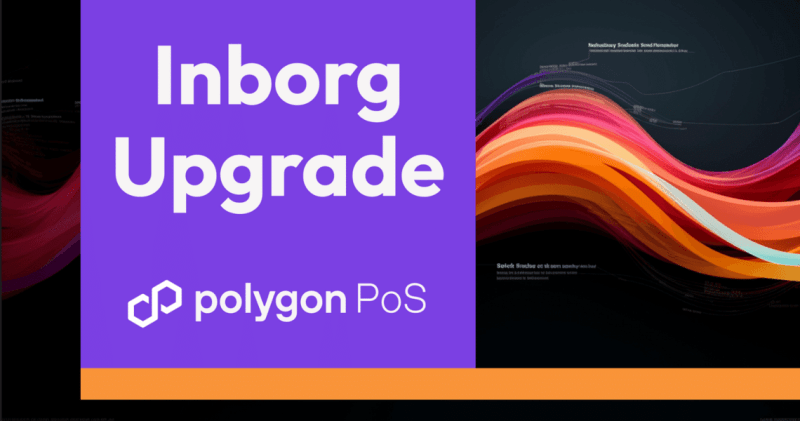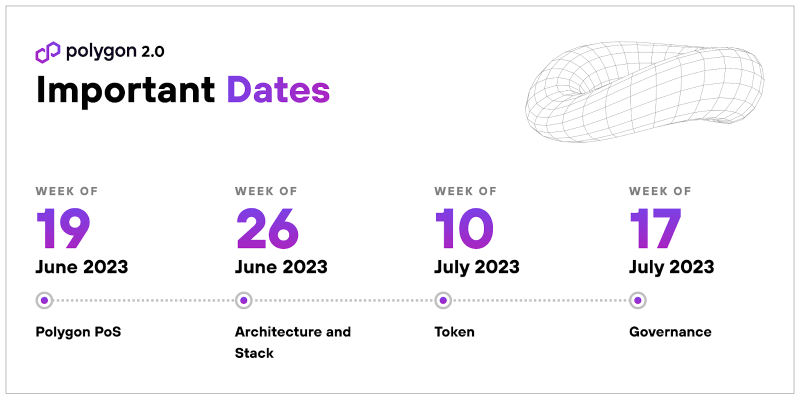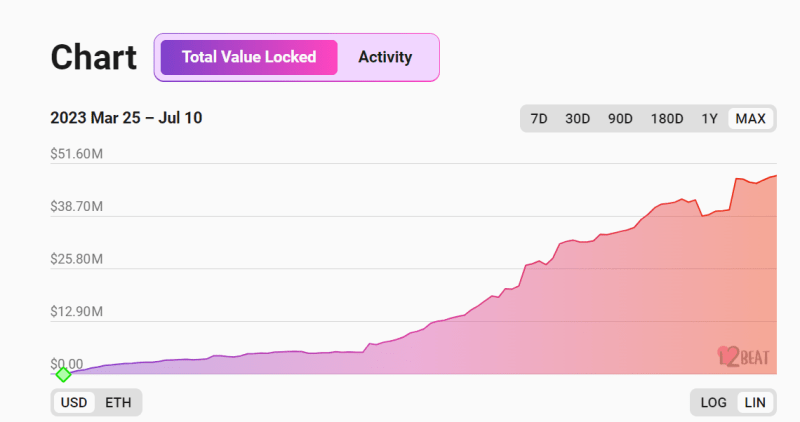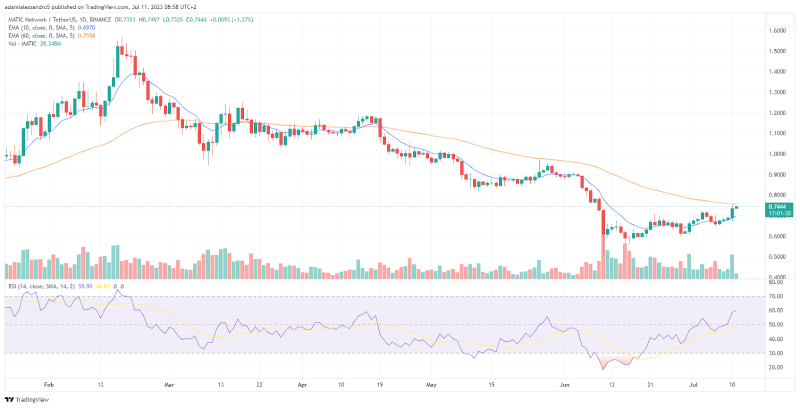
This morning, Polygon executed the hard fork “Indore,” successfully updating the Proof-of-Stake blockchain through a coordinated action of the various nodes in the network.
Polygon thus continues to create value around its infrastructure, which will soon expand to give way to the vision of Project 2.0, bringing unlimited scalability and unified liquidity.
Let’s take a look at all the details together.
Polygon: “Indore” fork successfully deployed on the network
This morning at 06:00 AM (CET), Polygon’s PoS blockchain successfully executed the “Indore” hard fork, more specifically at block #44934656.
The fork is part of a larger update, called “Inborg,” and was decided by the Polygon community through a “Polygon Improvement Proposal” (PIP) posted on the project’s governance section.
In detail, “Inborg” consists of two different proposals:
- Indore (PIP-12), executed a few hours ago, with the aim of improving network stability and eliminating potential BADBLOCK errors through an update of the State Sync mechanism;
- Aalborg (PIP-11), which will be executed next month and will lead to faster network finalization through the concept of “milestones” and the introduction of a dual client architecture.
Thus, this morning’s fork represents for Polygon only part of an upgrade aimed at eliminating latency and synchronization problems between blocks, which have negatively affected the past user experience.
In trying to simplify what the latest Indore implementation has brought, we can say that it has improved network stability, eliminated a bug, and changed the state synchronization process.
This last concept in particular is very important because with this update Polygon shifts the focus from a block-based to a time-based design.
The Proof of Stake network further strengthens its already excellent condition with on-chain metrics marking positive values.
While Polygon’s TVL remains more or less stable, activity on the network grows with the number of addresses with non-zero balance hitting 608 thousand (Glassnode data) and a high share of daily active users.

Regarding this hard fork for Polygon, the cryptocurrency exchange Binance expressed its support by announcing the stop of deposits and withdrawals from 05:30 AM (CET) until the upgrade is complete.
In parallel, the Polygon Labs team urged all nodes to upgrade their software before block #44934656 to avoid anomalies on the network.
#Binance will support the Polygon (MATIC) network upgrade and hard fork.https://t.co/XQNUU8zYQS
— Binance (@binance) July 7, 2023
Beyond Polygon’s fork: news on the horizon this week
Although the Indore hard fork of Polygon represents a major update for the network that now appears to have resolved the state synchronization issue, this turns out to be minor compared to the broader vision of the Polygon 2.0 infrastructure
A few weeks ago, it was announced that the Polygon Labs team will elevate the project to an “internet value layer” through an infrastructure that brings unified liquidity and unlimited scalability.
This is a huge change that disrupts, at least on paper, the way we have conceived the blockchain architecture of a layer 2 until now.
This process will require several months of work and updates that will be implemented bit by bit, promptly communicated to its community.
At this early stage, Polygon Labs has limited itself to disseminating all the key steps and concepts of the 2.0 revolution to its stakeholders through a weekly column of announcements.
The first change described concerns the transition of the PoS chain to a zk-EVM validium, which will inherit the security of Ethereum, taking advantage of zero-knowledge cryptographic proofs (with tx data compressed off-chain).
Last week, on the other hand, news was released of what will be the 4-layer structure of the upcoming network that will integrate the staking, interoperability, execution and demonstration layers with each other.

This week, according to reports from the official Polygon blog, in addition to the previously described fork, issues related to the ecosystem token will be discussed.
Many believe that the project will create a new token to be dedicated exclusively to the Polygon zkEVM network, which is growing day by day by increasing its reach.
Many crypto enthusiasts even believe that this new token will be distributed via airdrop to early users of the zk network, although there is no official news to confirm this.
Hence, eyes are on this week’s announcements that could unveil some important plans that the Polygon team has in store.
In the meantime, let’s take a look at the steadily increasing TVL of the zk EVM network, which according to data from L2beat, touched $48 million bridged and/or locked within the network’s decentralized protocols today.

Focus on the price of the MATIC token
As Polygon successfully executes the “Indore” hard fork and prepares to announce major new updates, the MATIC token reacts positively to news on the price front
Today, the cryptocurrency is up 10% over the past 24 hours, with high probability of a bullish continuation after going through a long bearish phase.
Hence, it could reverse the medium-term bearish trend that began in February 2023 and culminated with BlackRock‘s announcement of a filing with the SEC to launch a spot ETF.
It was precisely in the latter circumstance that MATIC halted its descent by hinting at a tentative rise, much less pronounced than that recorded by Bitcoin.
We’ll see if with the latest news on the technology side, the price changes of the Polygon ecosystem’s native currency will be able to compete with those of the king again.
Usually, such announcements have little impact on market dynamics in the short term, as they are not appealing to the average investor who knows little about blockchain.
On the other hand, for insiders and true industry enthusiasts, these updates are crucial to understanding the intrinsic value of the project and assessing how far it could go monetarily.
For MATIC, there is no doubt in the long run: the token will benefit from upgrades to the infrastructure and will play a key role within the new ecosystem.
In the meantime, for short-term speculators, we can mention the $0.94 and $1.17 levels as decisive for the cryptocurrency’s price action.
Should they be broken soon with an accompanying volume, a bullish continuation could await us with high probability.
Keep an eye also on how MATIC will perform near the 60 daily EMA, which repelled attempted attacks in March and April and was never breached the following months.
MATIC currently trades at a price of $0.744 with a market capitalization of $6.9 billion and volume in the past 24 hours of about $500 million.

Polygon’s daily price chart (MATIC/USDT)

